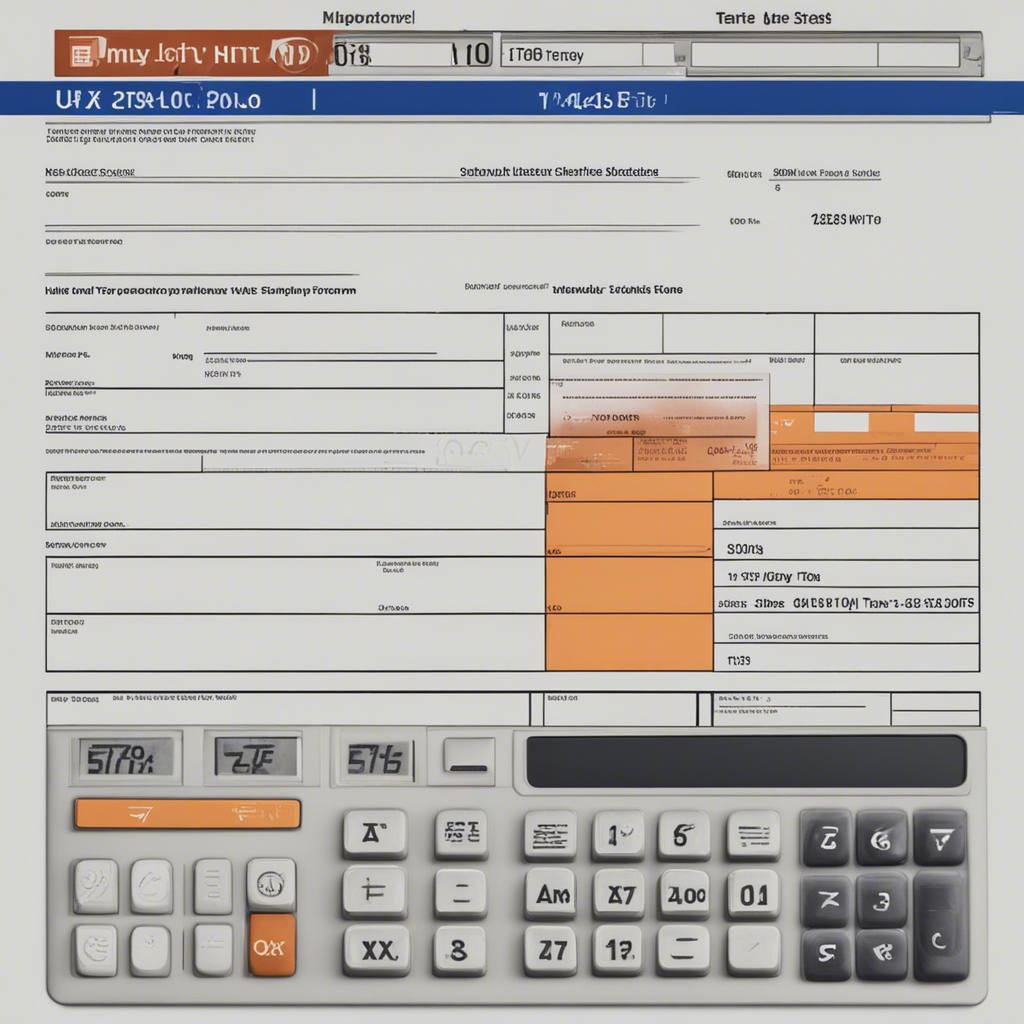
Understanding Tax Planning: A Comprehensive Guide
Tax planning is a crucial aspect of managing personal and business finances. By strategically organizing your income, investments, and expenses, you can minimize your tax liability and maximize your financial gains. In this comprehensive guide, we will delve into the key concepts, benefits, strategies, and tips to help you better understand tax planning and make informed decisions. So, let’s dive in!
Table of Contents
- What is Tax Planning?
- The Importance of Tax Planning
- Key Considerations in Tax Planning a. Tax Laws and Regulations b. Personal Financial Goals c. Life Events and Timing
- Types of Taxes a. Income Tax b. Capital Gains Tax c. Estate and Inheritance Tax d. Sales Tax
- Tax Planning Strategies and Techniques a. Income Shifting b. Tax Credits and Deductions c. Asset Location d. Retirement Planning
- Working with Tax Professionals
- Common Mistakes to Avoid in Tax Planning
- Tax Planning Tools and Resources
1. What is Tax Planning?
Tax planning is the proactive process of organizing one’s financial activities to minimize tax liability within the confines of the law. It involves analyzing various financial aspects, such as income, investments, deductions, and credits, to develop a strategic approach that optimizes tax outcomes. Effective tax planning ensures compliance with tax laws while maximizing potential savings.
2. The Importance of Tax Planning
Understanding and implementing tax planning strategies can result in significant financial benefits. By minimizing tax liability, individuals and businesses can retain more of their hard-earned income, have more funds available for investment or personal expenses, and potentially increase their overall wealth. Furthermore, tax planning helps ensure accurate and timely tax compliance, reducing the risk of penalties and audits.
3. Key Considerations in Tax Planning
Successful tax planning requires careful consideration of various factors. Let’s explore the key considerations that should be taken into account:
a. Tax Laws and Regulations
Tax laws and regulations differ among jurisdictions, and they are subject to change over time. Staying updated on tax legislation and the associated implications is essential for effective tax planning. Utilizing reputable resources such as official government websites, tax publications, and tax professionals can help ensure compliance and maximize tax benefits.
b. Personal Financial Goals
Each individual or business has unique financial goals, such as saving for retirement, funding education, or expanding their business. Tax planning should align with these goals to optimize the financial strategy. By understanding your short-term and long-term objectives, you can make informed decisions that are tailored to your specific needs.
c. Life Events and Timing
Life events, such as marriage, divorce, childbirth, or retirement, can significantly impact your tax situation. Understanding how these events affect your tax obligations and opportunities is essential. Furthermore, timing plays a crucial role in tax planning. For instance, deferring income or accelerating deductible expenses in the right tax year can lead to substantial savings.
4. Types of Taxes
Understanding the different types of taxes is fundamental to effective tax planning. Here are some key tax categories you should be familiar with:
a. Income Tax
Income tax is imposed on individuals and businesses based on their earnings, including salaries, wages, self-employment income, rental income, and dividends. It is typically levied at both the federal and state level. Understanding the progressive tax brackets, tax deductions, and credits associated with income tax is crucial for optimizing tax planning strategies.
b. Capital Gains Tax
Capital gains tax applies to the sale of assets, such as stocks, real estate, or collectibles, that have appreciated in value. It is calculated based on the capital gain realized from the sale. Strategies such as tax-loss harvesting and holding investments for the long term can help minimize capital gains tax.
c. Estate and Inheritance Tax
Estate tax is levied on the transfer of property upon an individual’s death. Inheritance tax, on the other hand, is imposed on the beneficiaries who inherit the property. Understanding the thresholds, exemptions, and gifting strategies can assist in effective estate and inheritance tax planning.
d. Sales Tax
Sales tax is a consumption tax imposed on the sale of goods and services. It is typically collected by the seller at the point of purchase. Sales tax rates and requirements vary across jurisdictions. Being aware of sales tax regulations in your locality is essential, especially for businesses engaged in sales activities.
5. Tax Planning Strategies and Techniques
A variety of tax planning strategies and techniques can be employed to minimize tax liability and optimize financial outcomes:
a. Income Shifting
Income shifting involves redistributing income among family members or legal entities to take advantage of lower tax rates or to utilize tax credits and deductions more effectively. This strategy is commonly employed by high-income earners to reduce their overall tax burden. However, it is crucial to comply with anti-avoidance regulations and ensure that the shifting is done legitimately.
b. Tax Credits and Deductions
Tax credits and deductions reduce the amount of tax owed. They can be either refundable or non-refundable. Understanding the available tax credits and deductions, such as the Child Tax Credit, Earned Income Tax Credit, or deductions related to mortgage interest or medical expenses, can significantly impact tax planning outcomes.
c. Asset Location
The location of your assets can have tax implications. By strategically placing investments in tax-efficient accounts, such as individual retirement accounts (IRAs) or 401(k)s, you can defer taxes or benefit from tax-free growth. Understanding the tax treatment of different investment vehicles and balancing your portfolio accordingly can optimize tax outcomes.
d. Retirement Planning
Retirement planning involves utilizing tax-advantaged retirement accounts and strategies to save for retirement while minimizing current income tax. Contributions to retirement accounts, such as traditional IRAs or employer-sponsored 401(k)s, are often tax-deductible, while the growth within these accounts is tax-deferred. Utilizing these retirement savings vehicles can result in substantial tax savings over time.
6. Working with Tax Professionals
While individuals can handle basic tax planning on their own, complex tax situations often require the expertise of tax professionals. Enlisting the services of certified public accountants (CPAs), tax attorneys, or enrolled agents can provide valuable advice and assistance in navigating the intricacies of tax planning. These professionals stay updated on changing tax laws and regulations and can offer personalized strategies tailored to your specific circumstances.
7. Common Mistakes to Avoid in Tax Planning
When engaging in tax planning, it is important to be aware of common mistakes that can lead to unfavorable outcomes or legal issues. Some typical mistakes to avoid include:
- Neglecting to maintain proper documentation and records to support deductions or claims.
- Failing to plan for changes in tax laws or overlooking new tax incentives.
- Incorrectly categorizing income or expenses, leading to inaccurate tax reporting.
- Engaging in illegal or unethical tax evasion practices that can lead to severe penalties.
By avoiding these mistakes and actively educating yourself on tax planning, you can maximize the benefits while minimizing potential risks.
8. Tax Planning Tools and Resources
Numerous tax planning tools and resources are available to assist individuals and businesses in their tax planning endeavors. Here are a few notable examples:
- Tax Preparation Software: Software programs such as TurboTax or TaxAct simplify the tax filing process and often include built-in tax planning features.
- Tax Calculators: Online tax calculators, such as those offered by the Internal Revenue Service (IRS), can help estimate taxes owed or potential savings.
- Government Websites: Official government websites provide valuable resources, publications, and updates on tax laws and regulations at various levels.
- Professional Organizations: Professional organizations, like the American Institute of Certified Public Accountants (AICPA), offer resources, articles, and access to tax professionals, enriching your tax planning knowledge.
Conclusion
Tax planning plays a crucial role in managing personal and business finances optimally. By strategically organizing income, investments, deductions, and credits, individuals and businesses can minimize tax liability while maximizing financial gains. Understanding the key concepts, considering relevant factors, and employing effective tax planning strategies can lead to substantial tax savings and increased financial well-being. Remember to consult with tax professionals and utilize reputable resources to ensure accurate tax planning. Start optimizing your tax strategy today and reap the benefits for years to come.
Disclaimer: The information provided in this blog post is for educational purposes only and should not be considered as professional tax advice. Please consult with a qualified tax professional or accountant for personalized advice and guidance based on your specific situation.






